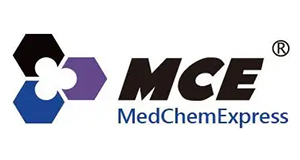Celecoxib-d7, CAS 544686-21-7
Celecoxib-d7, CAS 544686-21-7
SKU
MEXHY-14398S-500UG
Packaging Unit
500 μg
Manufacturer
MedChemExpress
Availability:
loading...
Price is loading...
Product Description: Celecoxib-d7 is the deuterium labeled Celecoxib. Celecoxib,a selective non-steroidal anti-inflammatory drug (NSAID), is a selective COX-2 inhibitor with an IC50 of 40 nM[1][2].
Formula: C17H7D7F3N3O2S
References: [1]Russak EM, et al. Impact of Deuterium Substitution on the Pharmacokinetics of Pharmaceuticals. Ann Pharmacother. 2019;53(2):211-216. /[2]Liu DB, et al. Celecoxib induces apoptosis and cell-cycle arrest in nasopharyngeal carcinoma cell lines via inhibition of STAT3 phosphorylation. Acta Pharmacol Sin. 2012 May;33(5):682-90./[3]Penning TD, et al. Synthesis and biological evaluation of the 1,5-diarylpyrazole class of cyclooxygenase-2 inhibitors: identification of 4-[5-(4-methylphenyl)-3-(trifluoromethyl)-1H-pyrazol-1-yl]benze nesulfonamide (SC-58635, celecoxib). J Med Chem. 1997/[4]Hou XL, et al. Combination of fasudil and celecoxib promotes the recovery of injured spinal cord in rats better than celecoxib or fasudil alone. Neural Regen Res. 2015 Nov;10(11):1836-40./[5]Suri A, et al. The effect of celecoxib on tumor growth in ovarian cancer cells and a genetically engineered mouse model of serous ovarian cancer. Oncotarget. 2016 Apr 8./[6]Pobbati AV, et al. A combat with the YAP/TAZ-TEAD oncoproteins for cancer therapy. Theranostics. 2020 Feb 18;10(8):3622-3635./[7]Liu C, et al. Celecoxib alleviates nonalcoholic fatty liver disease by restoring autophagic flux. Sci Rep. 2018 Mar 7;8(1):4108.
CAS Number: 544686-21-7
Molecular Weight: 388.42
Compound Purity: 99.0
Research Area: Inflammation/Immunology; Cancer
Solubility: 10 mM in DMSO
Target: COX
Formula: C17H7D7F3N3O2S
References: [1]Russak EM, et al. Impact of Deuterium Substitution on the Pharmacokinetics of Pharmaceuticals. Ann Pharmacother. 2019;53(2):211-216. /[2]Liu DB, et al. Celecoxib induces apoptosis and cell-cycle arrest in nasopharyngeal carcinoma cell lines via inhibition of STAT3 phosphorylation. Acta Pharmacol Sin. 2012 May;33(5):682-90./[3]Penning TD, et al. Synthesis and biological evaluation of the 1,5-diarylpyrazole class of cyclooxygenase-2 inhibitors: identification of 4-[5-(4-methylphenyl)-3-(trifluoromethyl)-1H-pyrazol-1-yl]benze nesulfonamide (SC-58635, celecoxib). J Med Chem. 1997/[4]Hou XL, et al. Combination of fasudil and celecoxib promotes the recovery of injured spinal cord in rats better than celecoxib or fasudil alone. Neural Regen Res. 2015 Nov;10(11):1836-40./[5]Suri A, et al. The effect of celecoxib on tumor growth in ovarian cancer cells and a genetically engineered mouse model of serous ovarian cancer. Oncotarget. 2016 Apr 8./[6]Pobbati AV, et al. A combat with the YAP/TAZ-TEAD oncoproteins for cancer therapy. Theranostics. 2020 Feb 18;10(8):3622-3635./[7]Liu C, et al. Celecoxib alleviates nonalcoholic fatty liver disease by restoring autophagic flux. Sci Rep. 2018 Mar 7;8(1):4108.
CAS Number: 544686-21-7
Molecular Weight: 388.42
Compound Purity: 99.0
Research Area: Inflammation/Immunology; Cancer
Solubility: 10 mM in DMSO
Target: COX

 Deutsch
Deutsch






